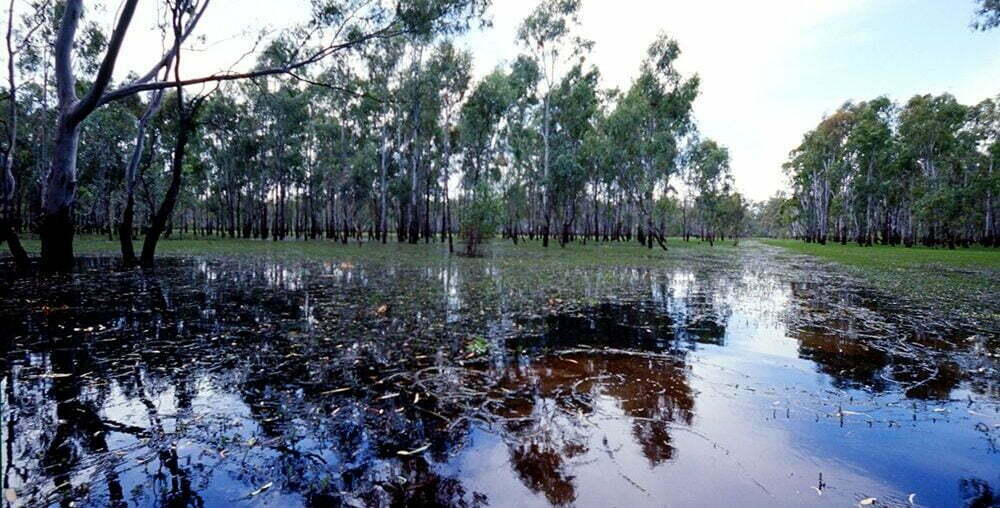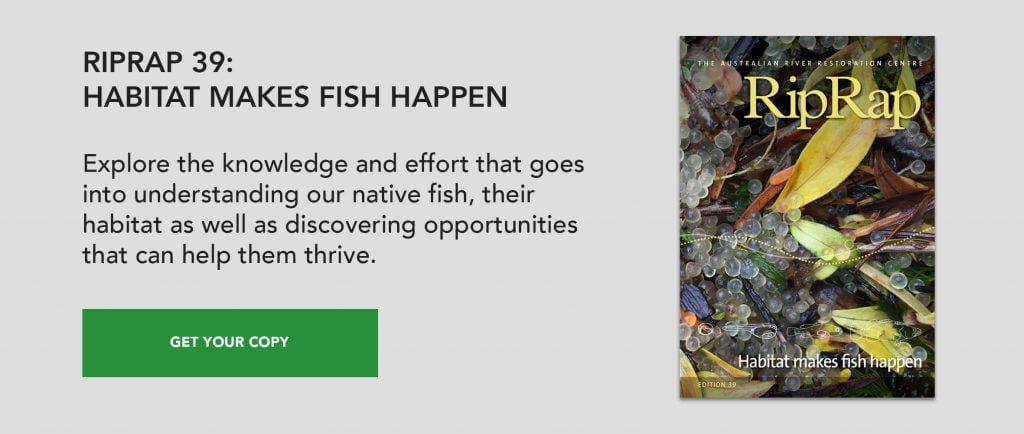In terrestrial and aquatic ecosystems, habitat complexity and connectivity promote biodiversity and population resilience. In regulated rivers, however, dams, weirs and water extraction simplify habitats and flow regimes, and disrupt connectivity. This has major impacts on the health of aquatic ecosystems, including fish.
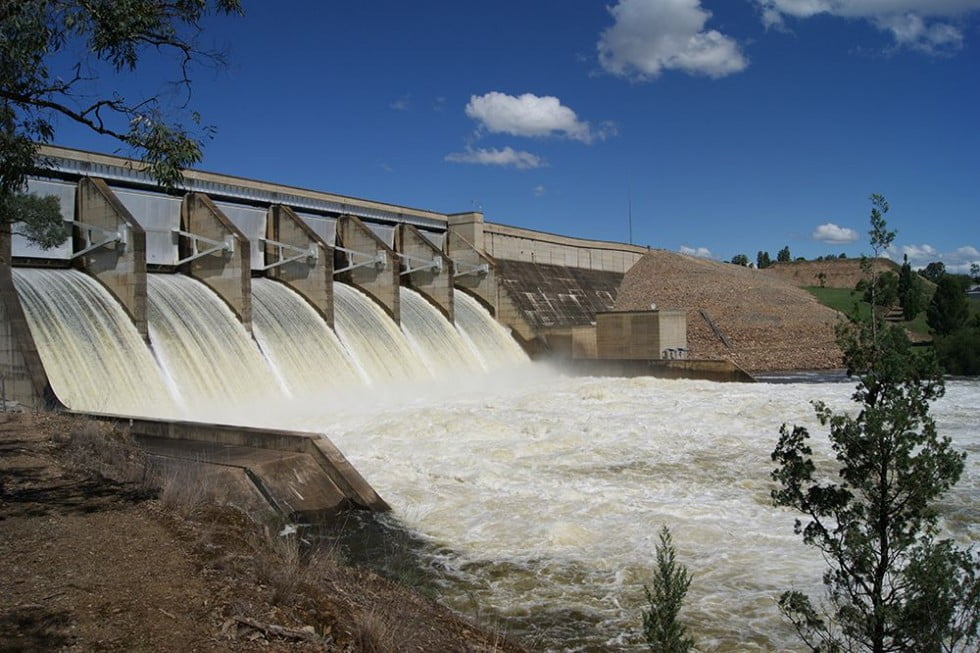
Rehabilitation of fish populations in these rivers is dependent on three key elements: habitat, flow and connectivity. Considerable effort is devoted to habitat restoration, particularly re-snagging and riparian rehabilitation, with the premise that ‘habitat makes fish happen’, but restoring physical habitat alone is insufficient to support diverse and healthy fish populations.
Rehabilitating fish populations in the highly regulated rivers of the Murray-Darling Basin (MDB) requires habitat restoration to be considered in the context of flow and connectivity. A strategic and realistic goal is to promote mosaics of connected habitats that incorporate the complex flow characteristics of natural rivers, at a range of spatial and temporal scales. To do this we need to look in more detail at what constitutes flow, habitat and connectivity, and how these factors interact to support ecosystem function.
The importance of Hydrodynamics:
Restoring ecologically relevant aspects of a river’s natural flow regime is fundamental to restoring the ecological health of regulated rivers. In this context, the term ‘flow’ is generally used to describe a river’s discharge, that is, the volume of water passing a specific point over a unit of time (for example, megalitres/day). Nevertheless, water volume and discharge are not factors to which aquatic biota, including fish, respond. Instead, they are influenced by the hydraulic elements that constitute flow, such as water velocity, depth and turbulence, and how they differ in space and time. These factors combined are called hydrodynamics, and the hydrodynamics of a river form an essential component of fish habitat.
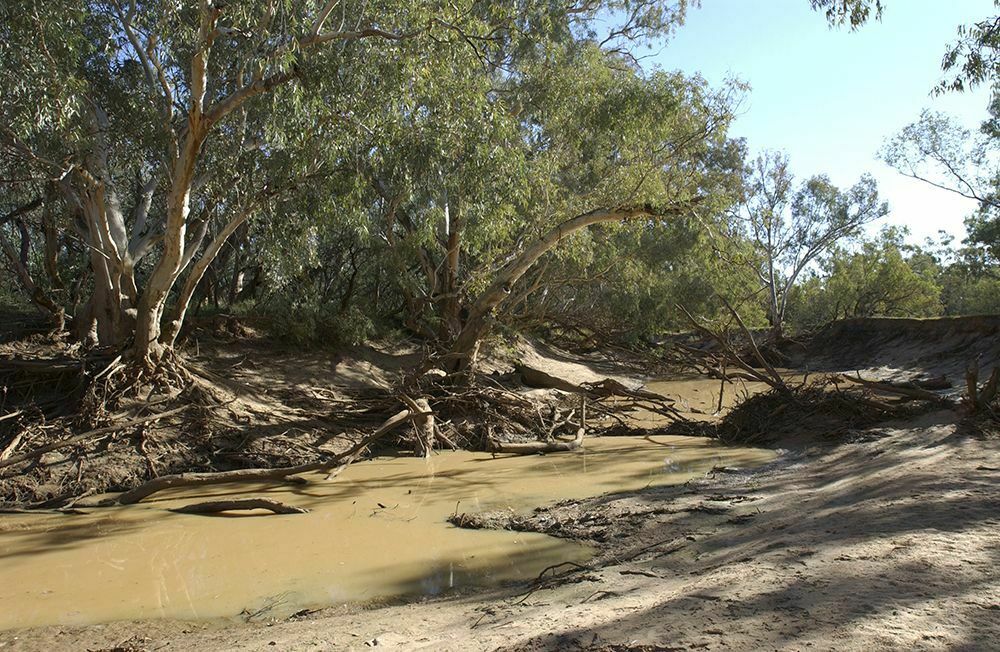
A river’s hydrodynamic characteristics are determined by the interaction of hydrology (discharge) with the geomorphology of the river channel, including channel shape and substrate, and habitat features such as large wood and bankside vegetation. In aquatic ecology there is a fundamental distinction between flowing water (river) and still-water (lake), with each supporting distinct ecological processes and patterns. River regulation, in particular dams and weirs, fragments and simplifies riverine habitats, in some cases rendering flowing water habitats more like lakes.
In Figure 1 below, a natural stream a) has higher mean water velocities and a greater diversity of velocities, with roughness such as snags and rocks creating eddies and complex changes in flow direction. In contrast, a river regulated by a weir b) has comparatively low mean velocities and a narrow range of velocities, with any snags and rocks promoting little hydrodynamic complexity.

Both rivers can have essentially the same structural habitat and discharge, but the regulated river has simplified hydrodynamics that favour generalist native species (often those adapted to wetlands) and invasive species such as carp. Lost from these habitats, or present in low abundances, are riverine species that rely on the complex hydraulic habitats created by flowing water.
In the MDB, one of the most striking examples of altered hydrodynamics occurs in the lower River Murray, where the construction of barrages and weirs has transformed more than 800 km of riverine habitat into a series of cascading lake-type habitats. This simplification of riverine hydrodynamics, and disruption of connectivity, has altered ecological function and biodiversity in the lower Murray, resulting in the loss of many biota, including at least three species of riverine fish (Trout cod, Macquarie perch and River blackfish), Murray crayfish and other invertebrates (e.g. aquatic snails).
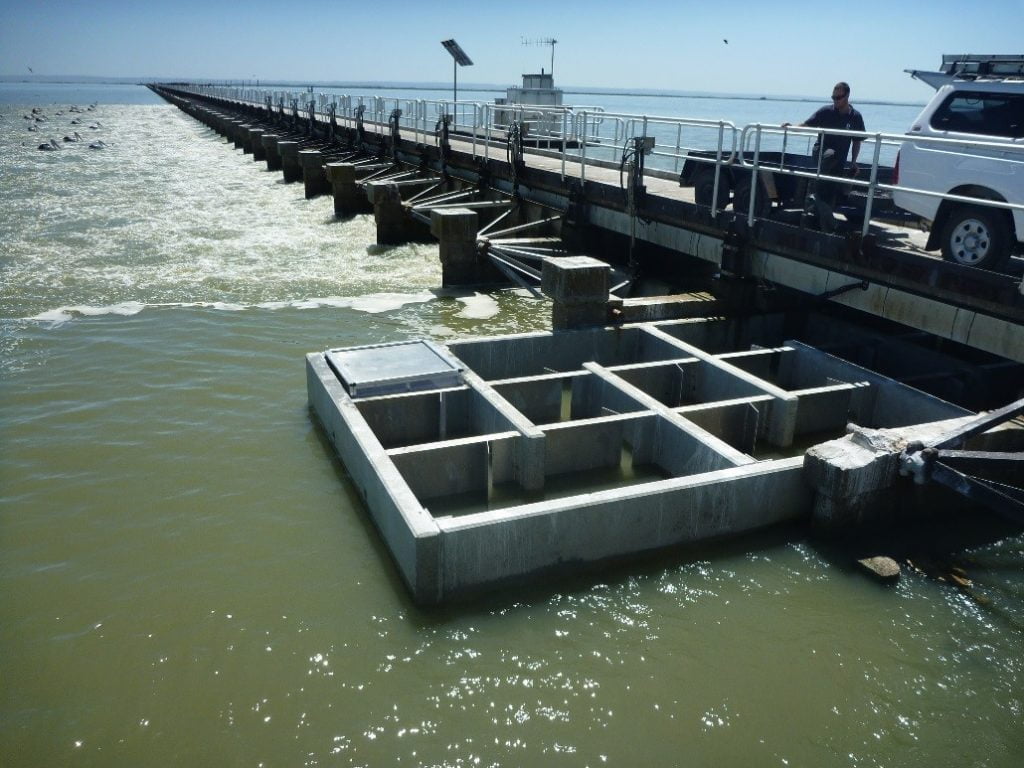
Restoring fish populations also requires an understanding of fish life histories and the spatial and temporal scales they operate over. This involves progressing beyond understanding the habitat requirements of individual fish to that of populations. In the MDB, we know that Murray cod love snags, but fundamental questions remain regarding the scales at which populations operate, and the diversity of habitats that influence population dynamics, including spawning, recruitment and migration.
Hydrodynamics influence the ecology of fishes at micro (cm to 10s m), meso (100s of m to 10s of km), and macro-scales (100s of km). At each scale, complexity and connectivity are essential. Micro-scale hydrodynamics, which can be considered from the perspective of a fish larvae, juvenile or adult, may include variation in water velocities, created by the interaction of flowing water and in-stream objects (for example, substrate and snags), providing hydraulic complexity that redistributes drifting larvae, minimising intra- and interspecific competition. This diversity also promotes slow-flowing edges and slack waters that concentrate zooplankton and fish larvae, providing refuge, and a feeding and nursery area. In weir pools, this hydraulic complexity is often absent.
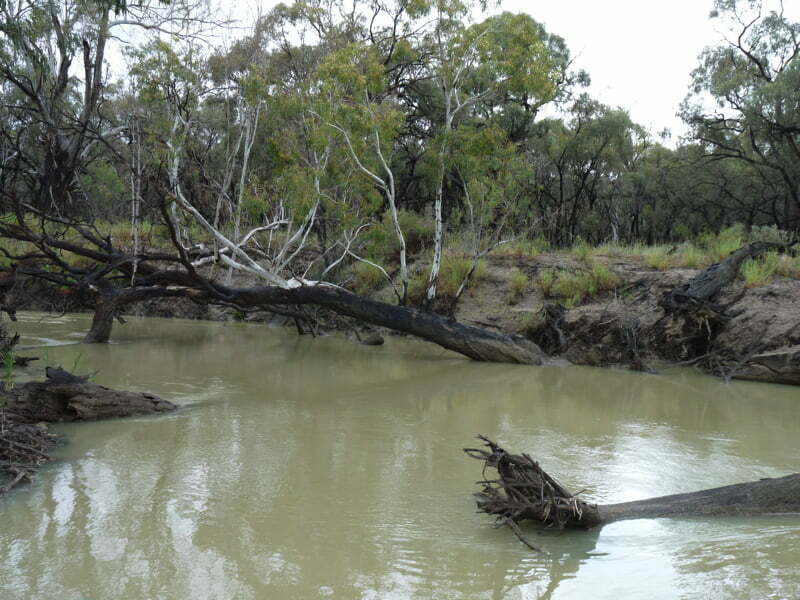
Meso-scale hydrodynamics reflect the diversity of habitats at the river reach-scale including pools, runs, riffles and associated off-channel habitats. Fish may move between these habitats to feed or complete key life history processes. For example, Murray cod in the lower River Murray make seasonal meso-scale spawning movements from main-channel weir pool habitats to flowing anabranch systems such as Chowilla and Lindsay-Mullaroo, or in the mid Murray, between Lake Mulwala and the Ovens River. Maintenance of these habitats and connectivity between them is essential to the health of Murray cod populations in these regions.
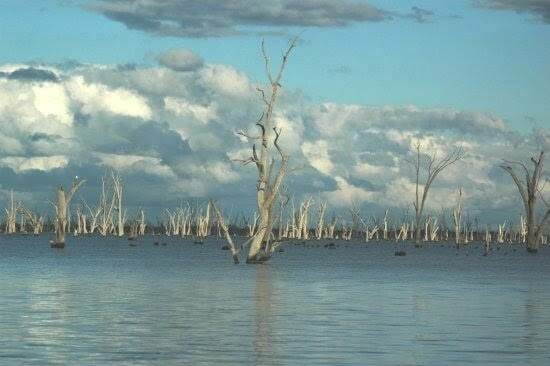
Macro-scale hydrodynamics, which occur over hundreds of kilometres, may influence many aspects of fish ecology including spawning, dispersal (migration and larval drift) and meta-population dynamics.
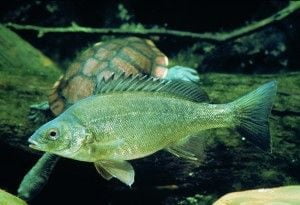
In the MDB, two notable species, Golden perch and Silver perch spawn in spring-summer, likely responding to water temperature and hydraulic conditions (potentially increasing velocity), eggs and larvae drift for many days over many kilometres, and juvenile and adult fish move upstream and downstream over hundreds of kilometres. Continuity of flowing water habitats over a macro-scale is essential for the completion of essential life history processes of these species.
Altered hydrodynamics and disruption of connectivity, either through direct obstruction of movement by a weir, or drifting eggs and larvae settling out in weir pools, compromises the resilience of populations. Restoration of ecosystem health in the MDB requires more than the restoration of volumes of water or physical habitats; it requires an understanding of the hydrodynamics of riverine/floodplain ecosystems and the integrated re-establishment of habitat diversity, flow and connectivity at relevant scales.
The pdf version of this story is also available. and for more stories you can purchase or download a copy of RipRap 39 magazine.
Related stories:
Measure, mix and stir … a recipe for healthy fish populations
Environmental flows – connecting hydrology and freshwater biodiversity
